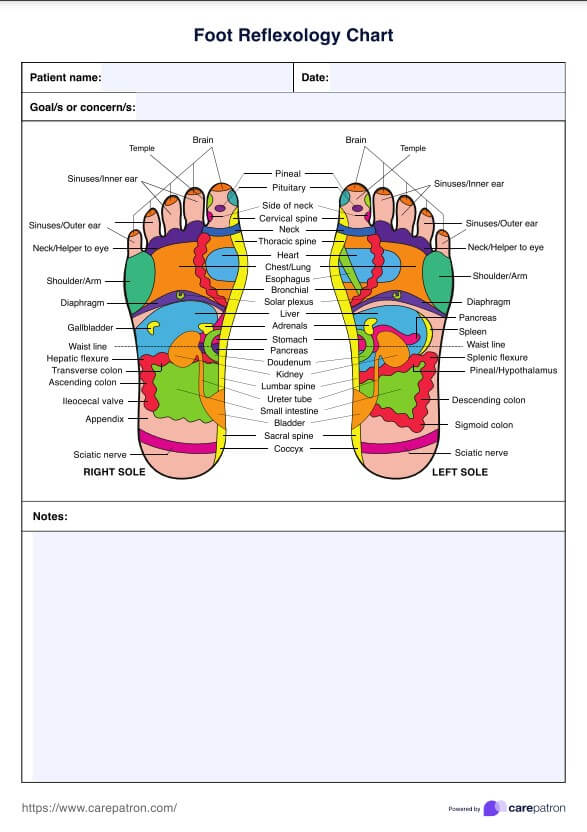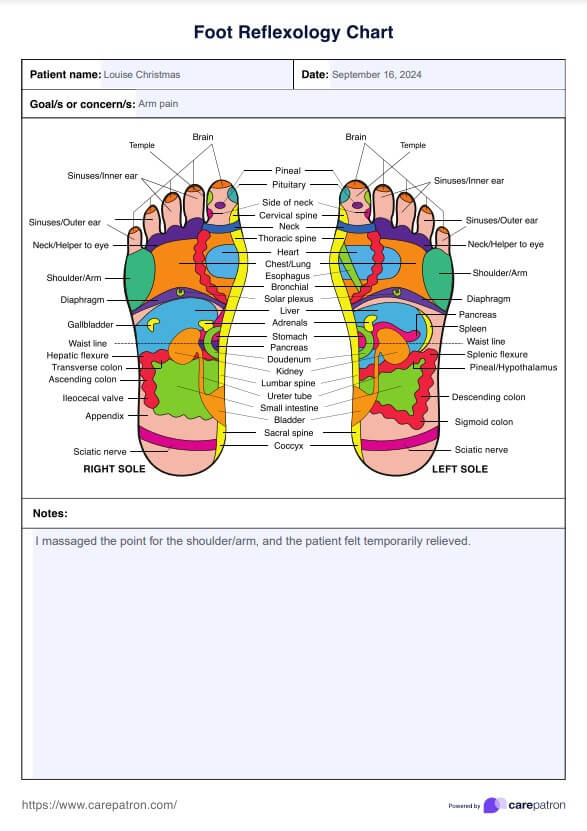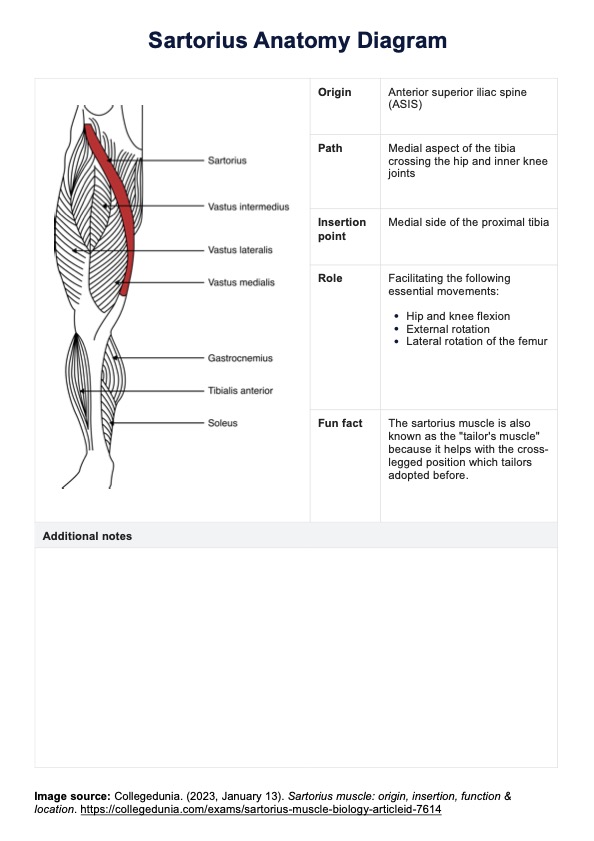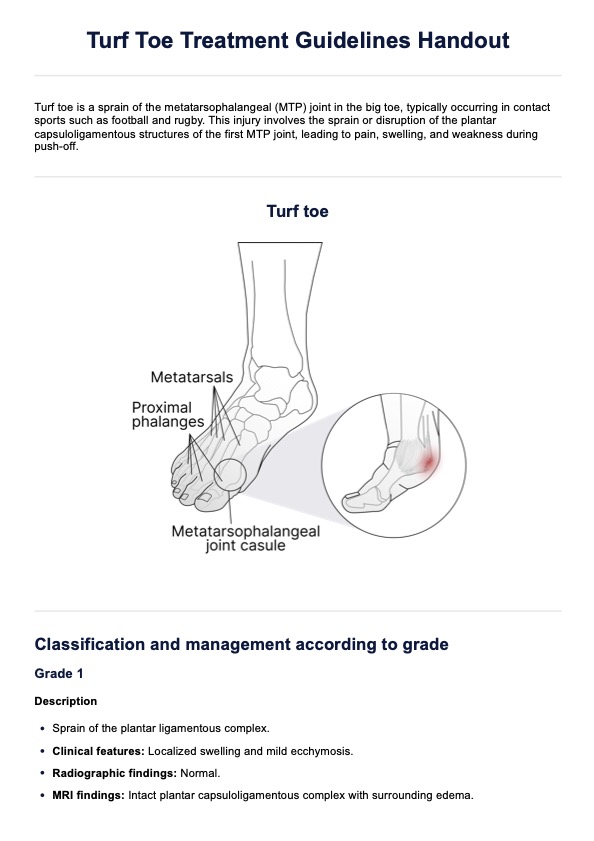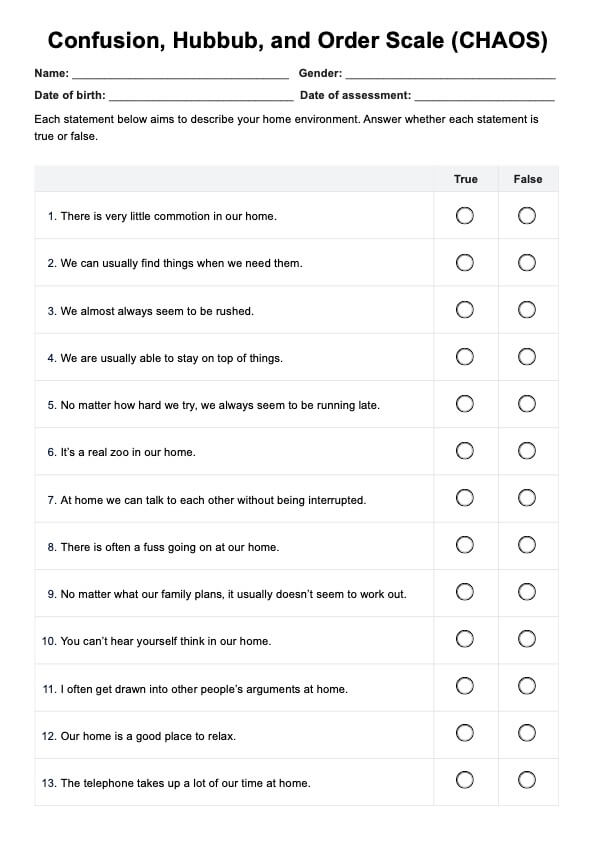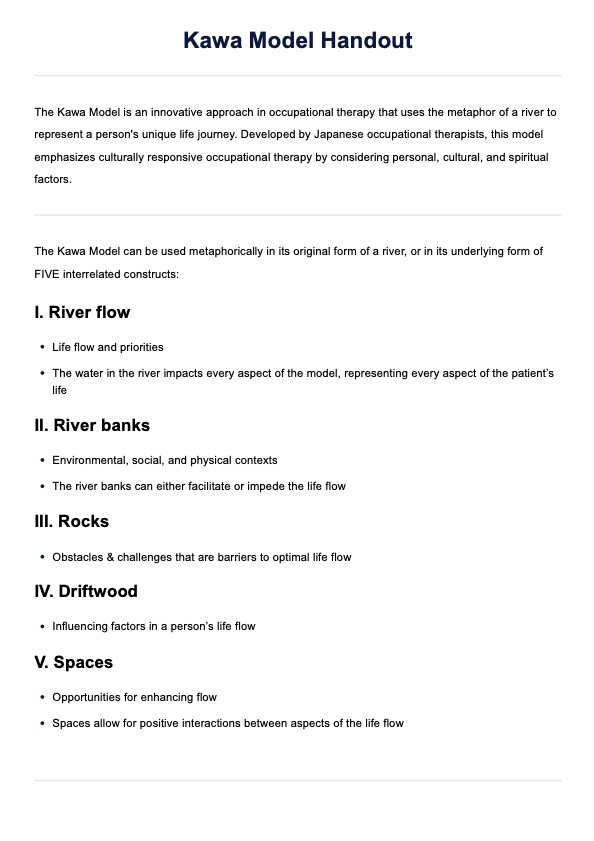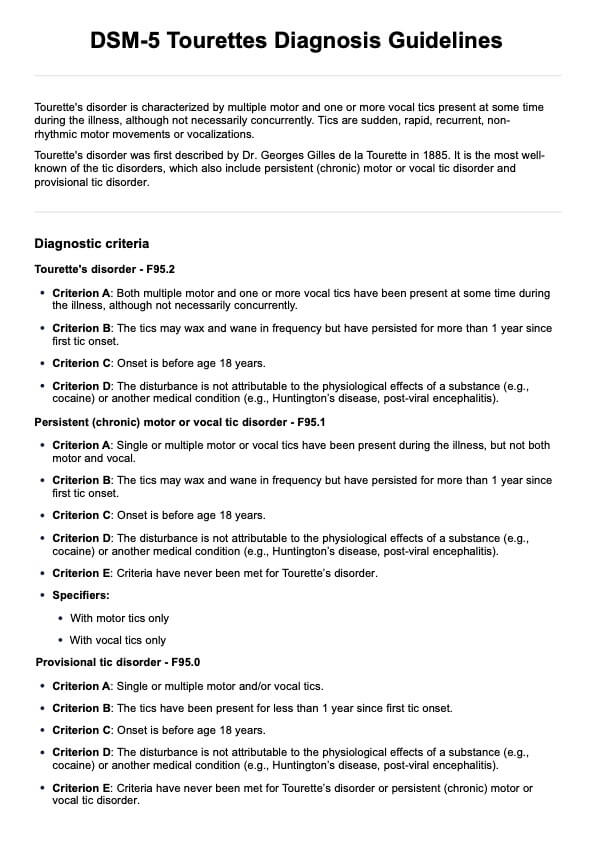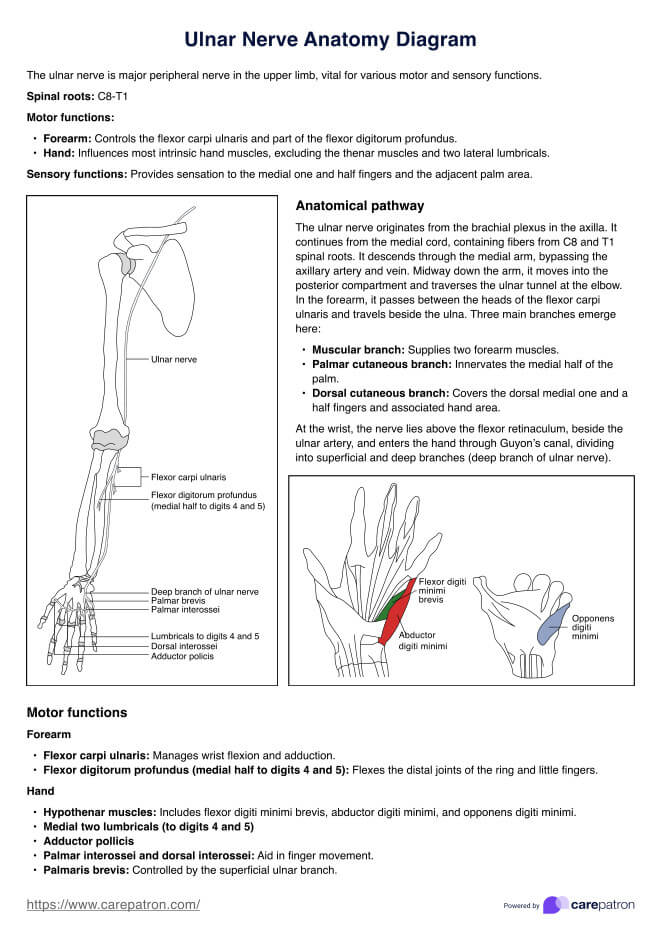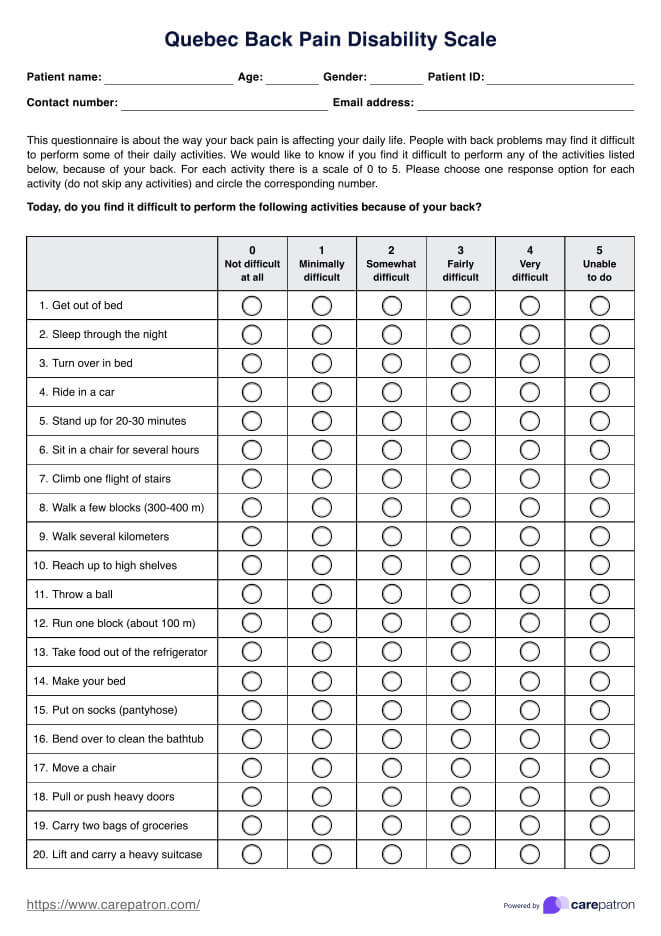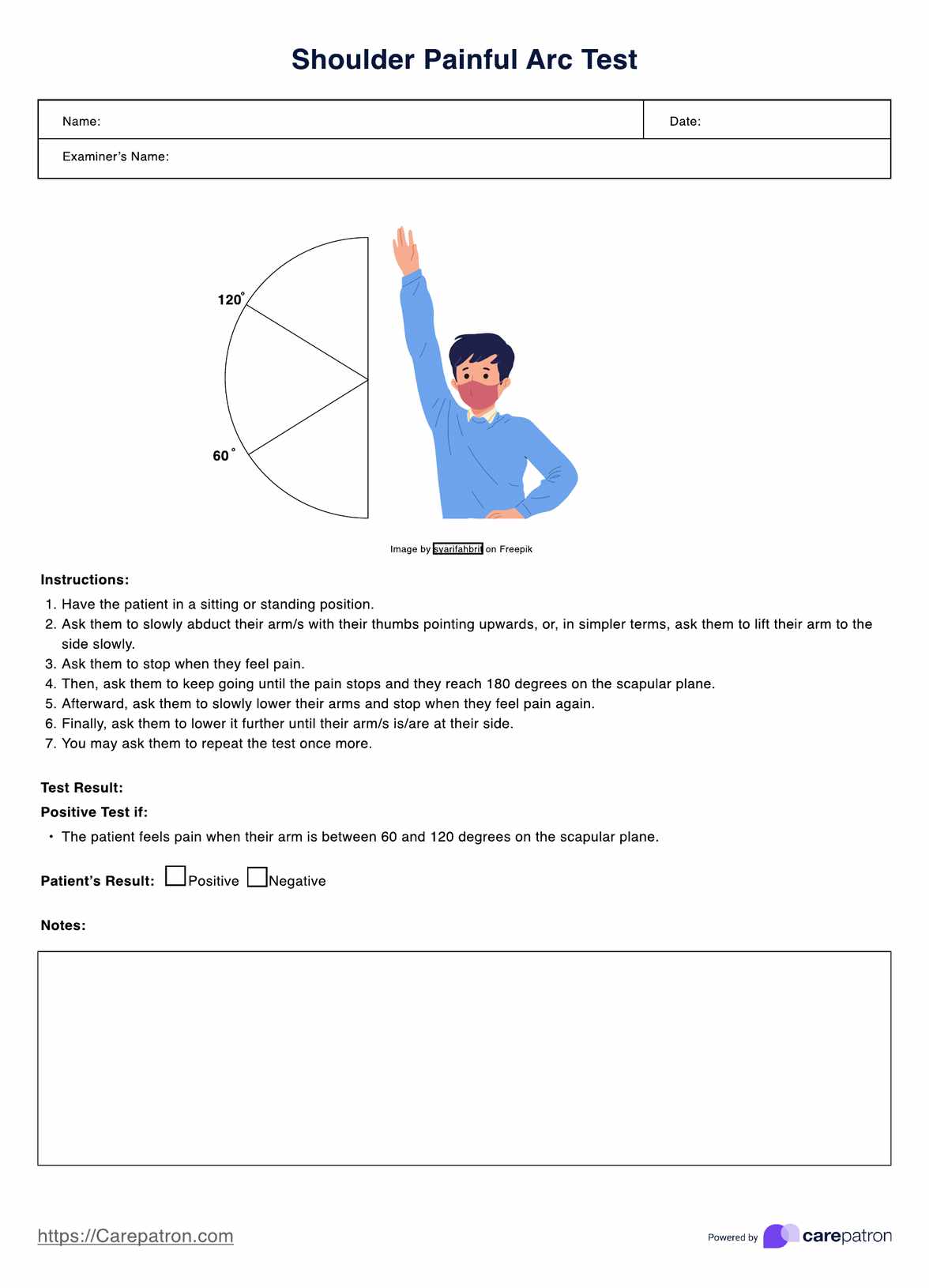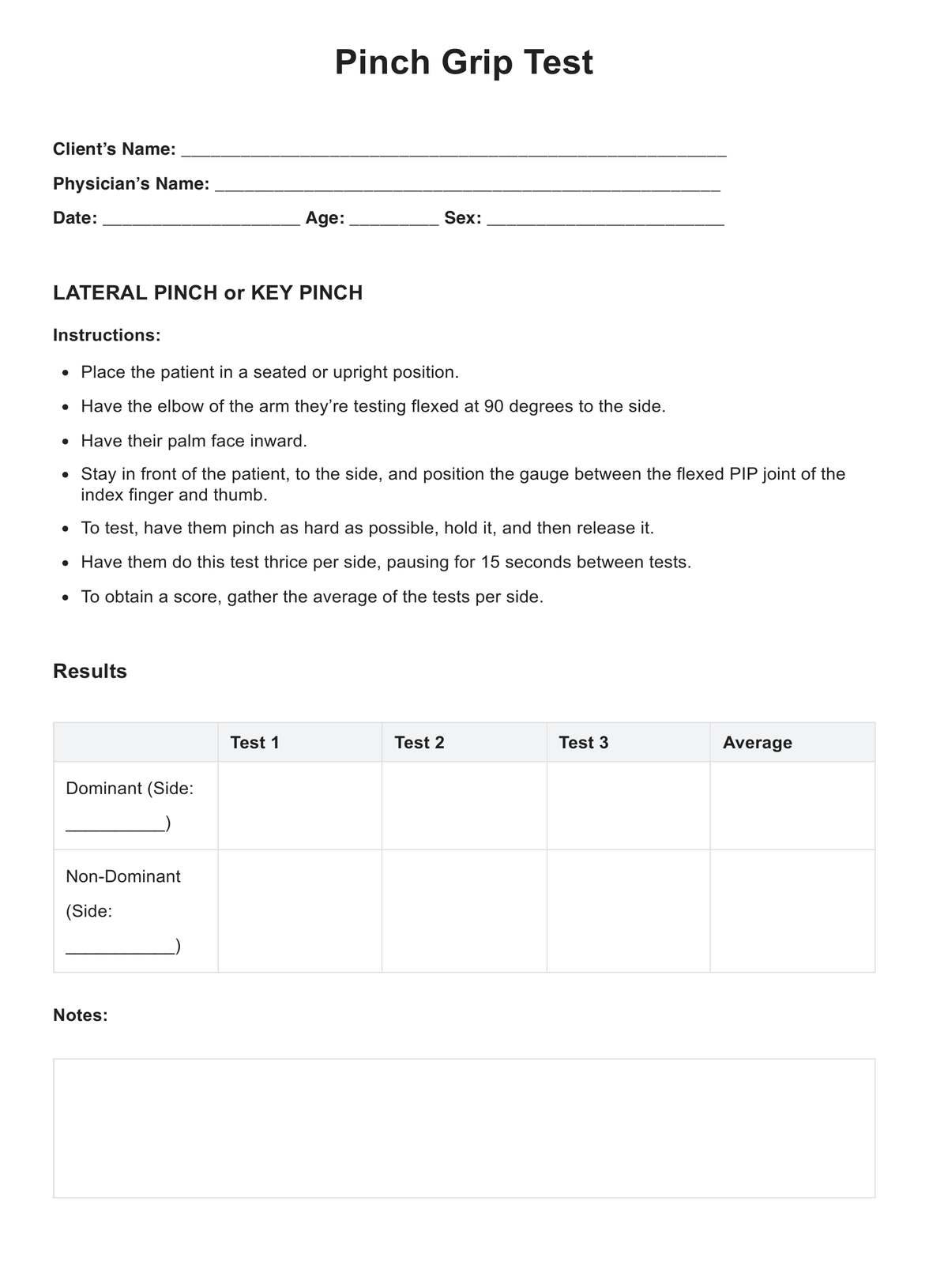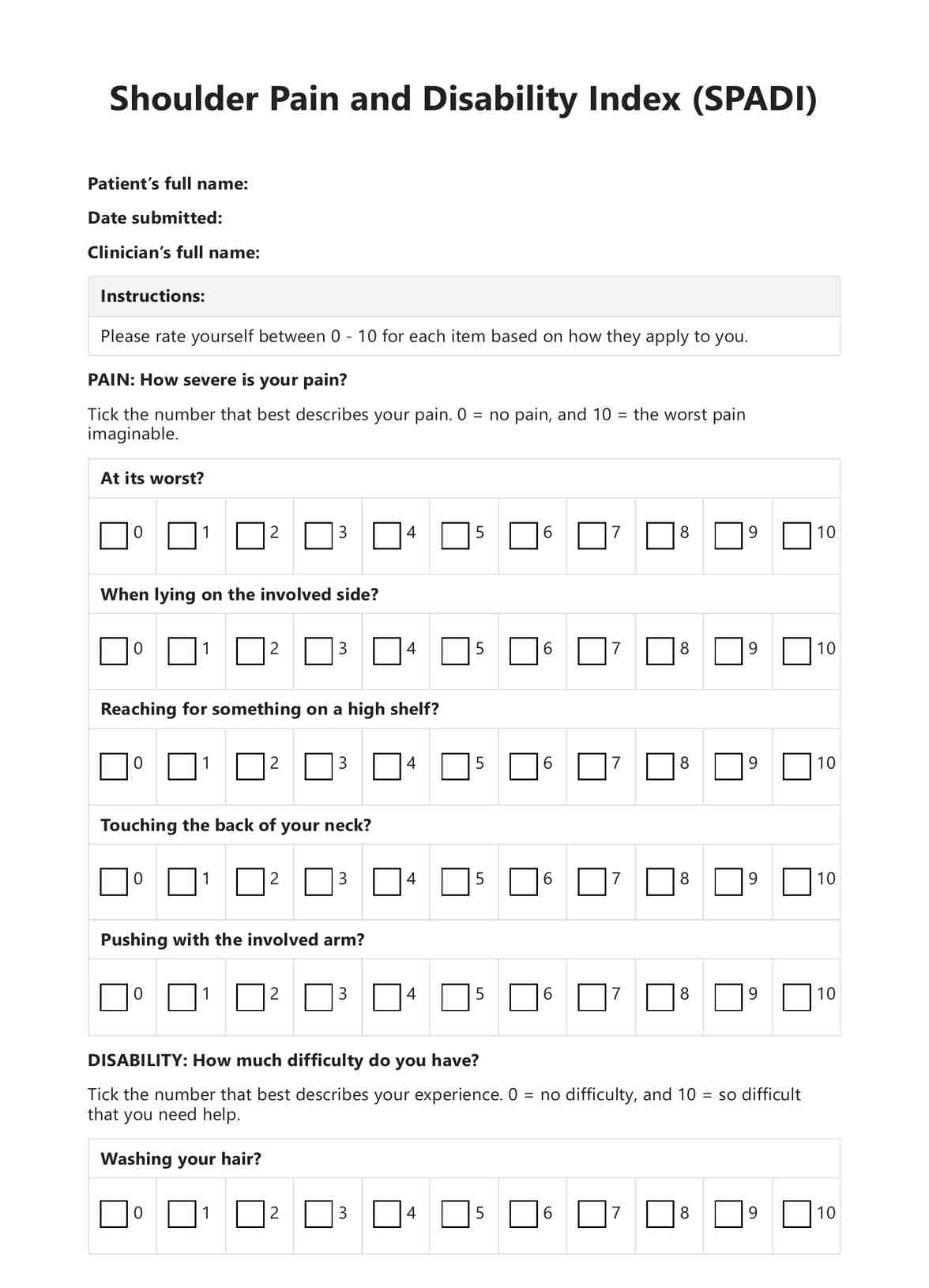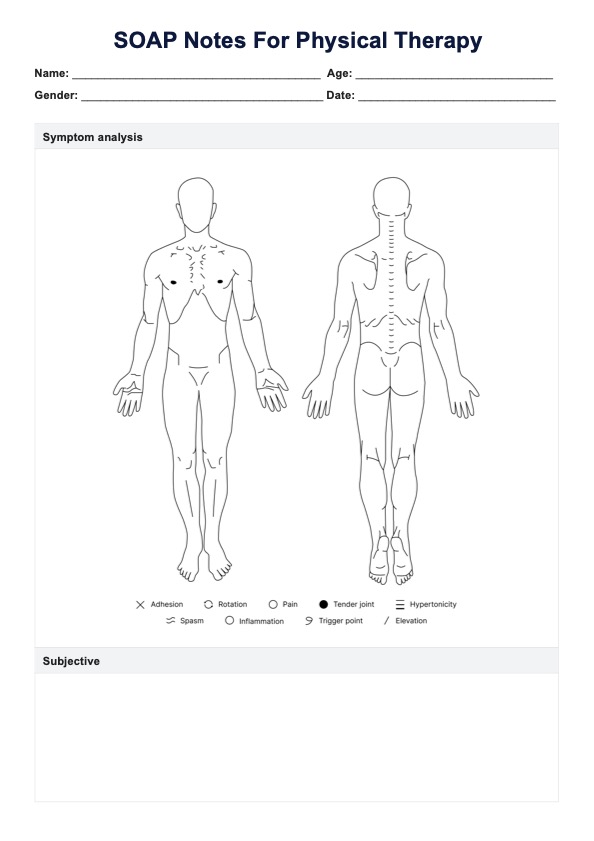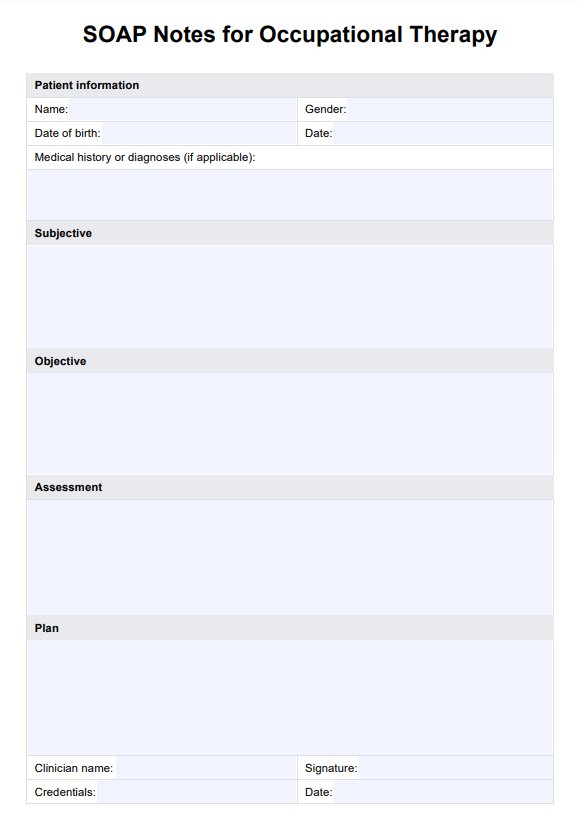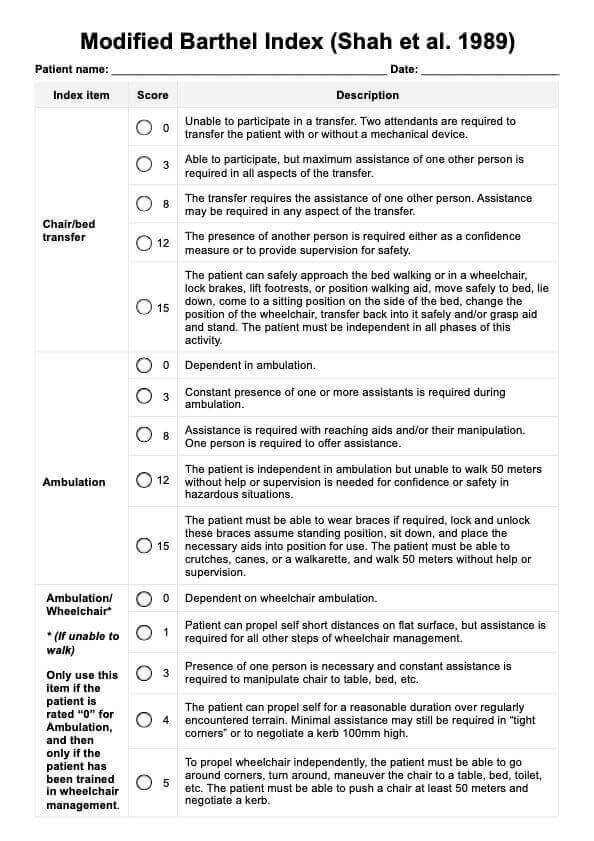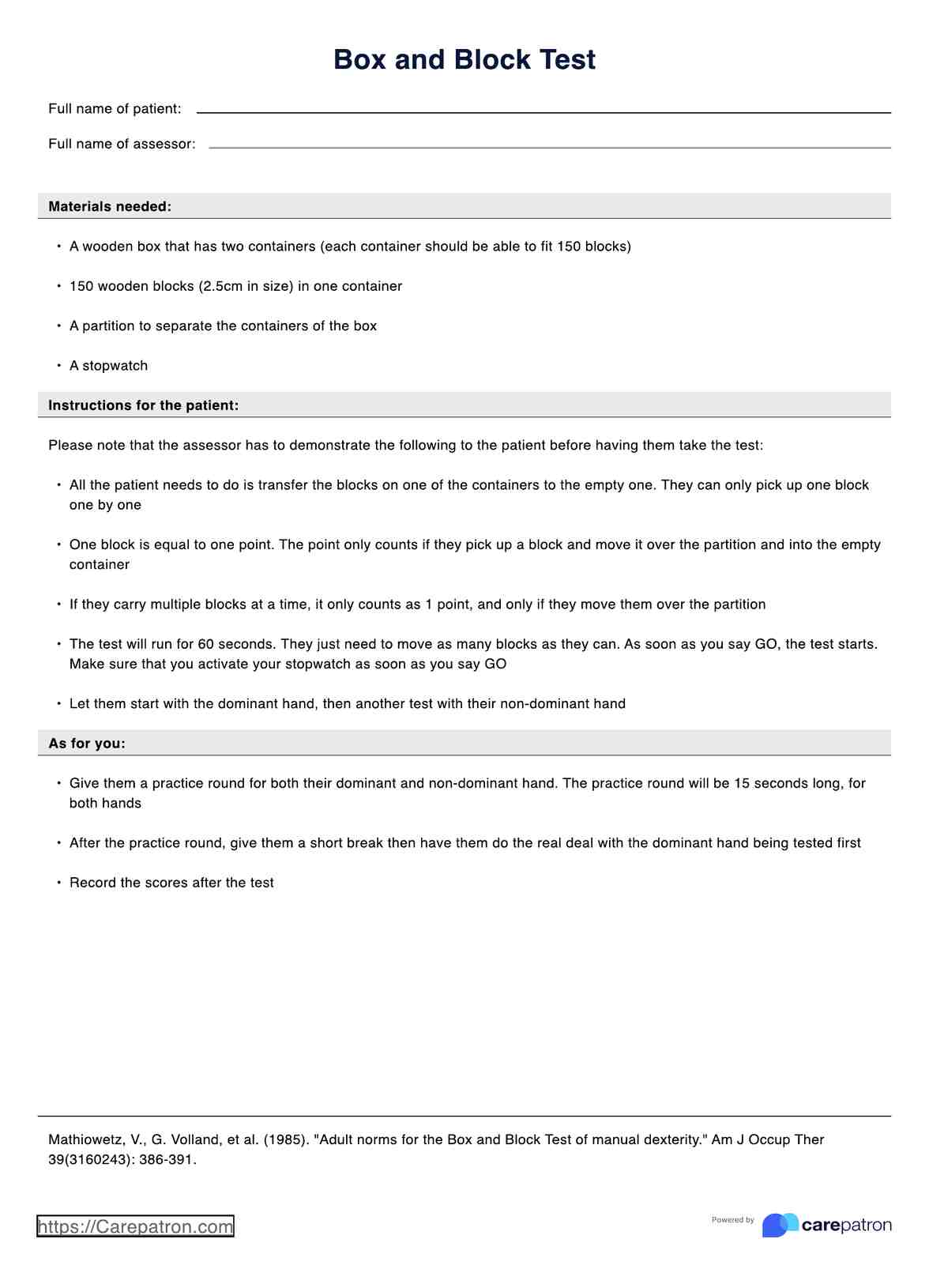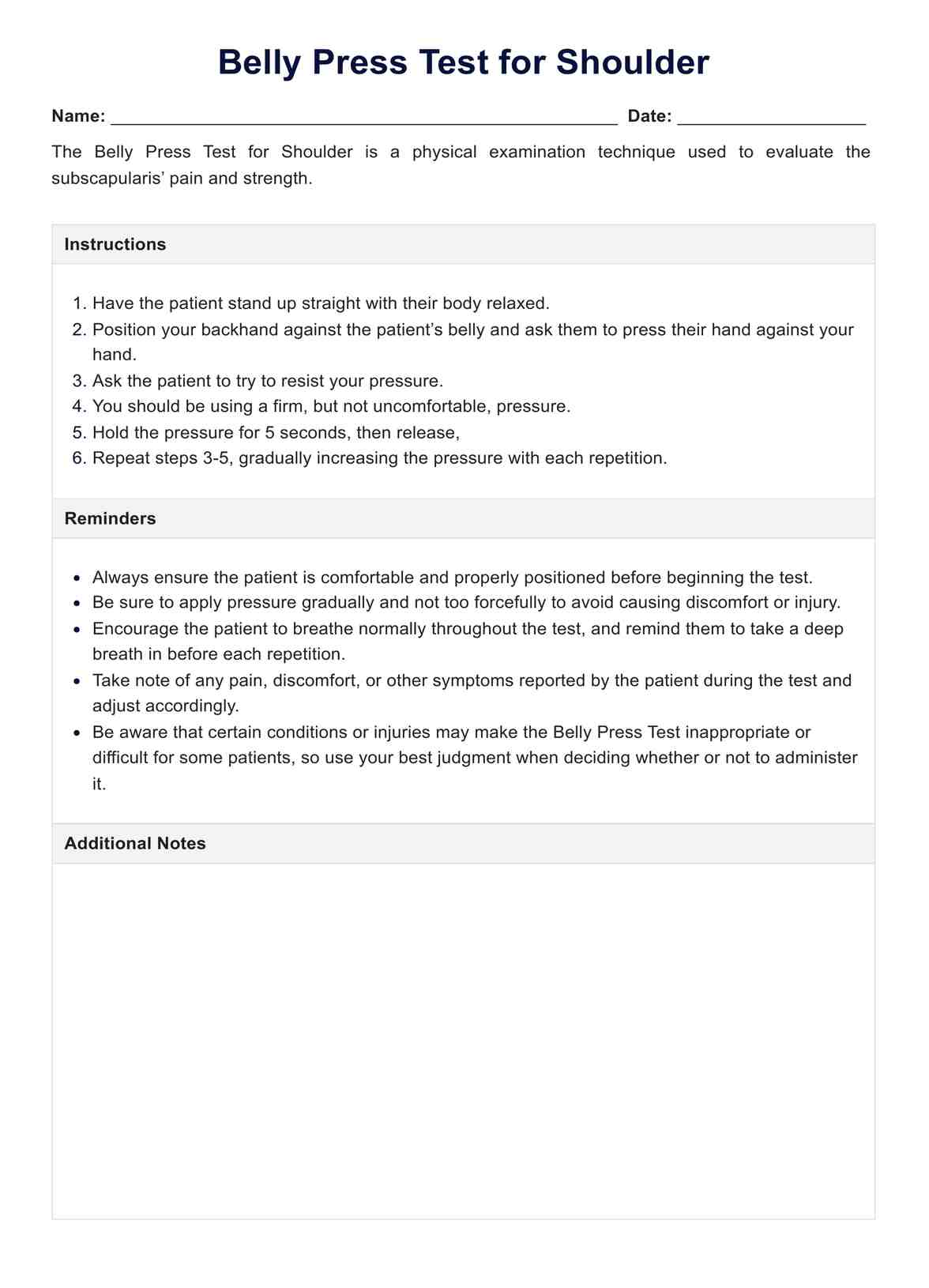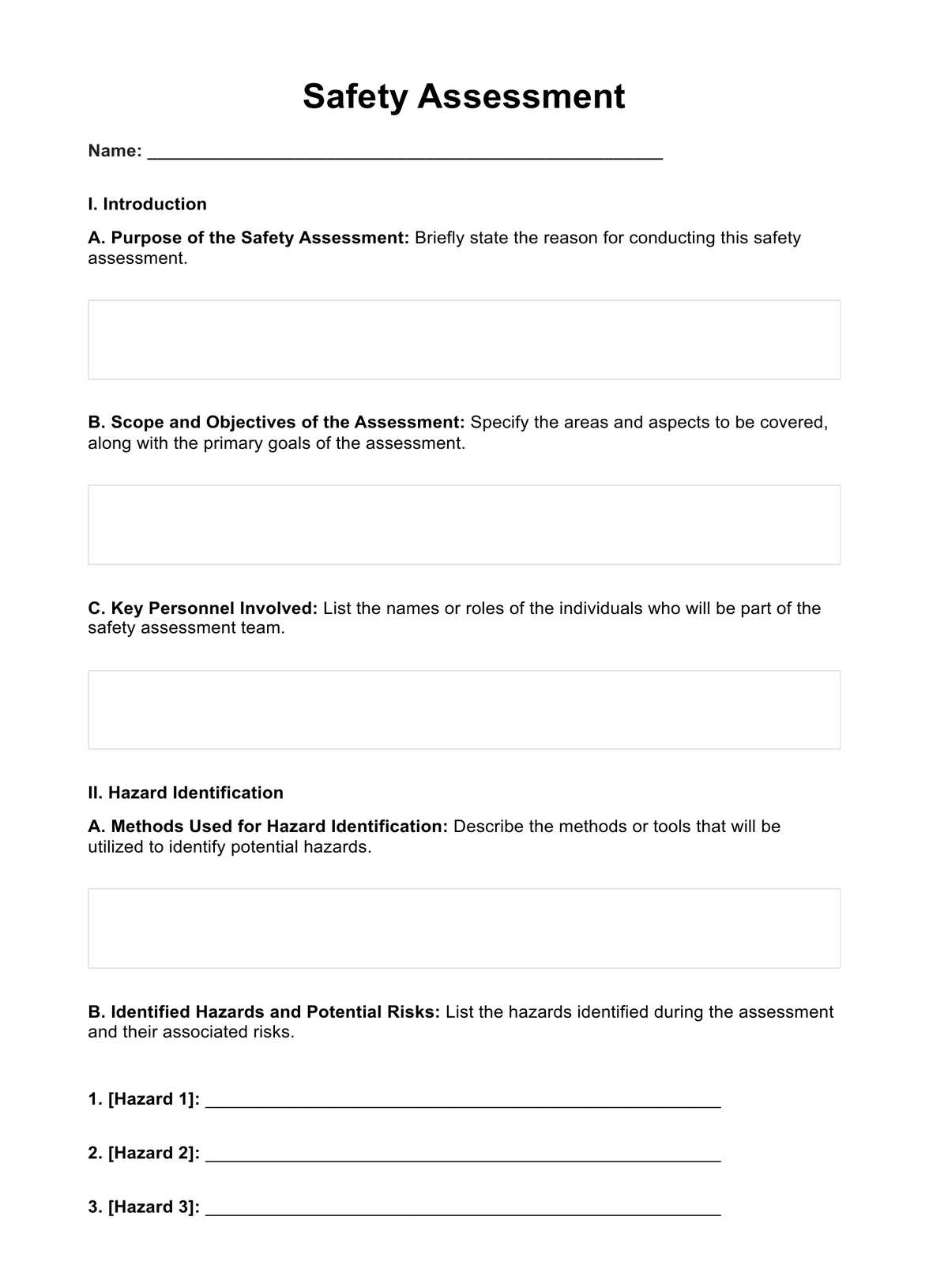Foot Reflexology Charts
Explore foot reflexology through a user-friendly Foot Reflexology Chart. Download for free to provide clients with ultimate wellness and self-care.


What is a Foot Reflexology Chart?
People worldwide have been practicing reflexology, a special kind of healing, for hundreds of years. It’s a secret art that involves pushing certain spots on one's hands or feet. Each reflexology point on the foot corresponds to a particular organ or body part, and sensitive or painful reflexology points may indicate imbalances or issues in those areas. Pressing them can make the corresponding body parts feel better, relieve tension, and help one's body feel good.
A reflexology chart, specifically a foot reflexology chart, is designed to illustrate a network of reflex points on the feet that are believed to be directly connected to different organs, body parts, and systems, from the nervous to the lymphatic system. The chart presents a detailed map, associating specific foot areas with corresponding body elements.
The chart’s fundamental principle is that practitioners can trigger positive responses in the corresponding organs or body areas by applying targeted pressure or stimulation to these reflex points. This practice is rooted in traditional Chinese medicine, which believes that the human body is interconnected and that specific points on the feet correspond to different organs and systems in the body.
Foot Reflexology Charts Template
Foot Reflexology Charts Example
How does the Foot Reflexology Chart work?
Our free printable Foot Reflexology Charts offer a comprehensive guide to unlocking the potential of reflexology. Follow these steps to make the most of your reflexology session:
Step 1: Download the chart
You can download the Foot Reflexology Chart through the link provided or our platform. It is also available in our resources library.
Step 2: Understand reflexology points
Use the chart to understand the various reflexology points on the feet and their corresponding organs and body parts. Discover how these points are connected and promote relaxation, stress relief, and overall well-being.
Step 3: Plan your reflexology approach
Refer to the chart as you plan your reflexology session. Identify the specific reflexology points that align with your and the patient's wellness goals and consider the techniques to stimulate them effectively.
Step 4: Engage in reflexology
Use the chart as a visual guide to stimulate the chosen reflexology points during the session. Apply appropriate pressure and techniques to activate these points and encourage positive effects. Remember, different areas of the food respond to different body parts. For example, the left foot corresponds to different body parts and organs on the left side.
Step 5: Reflect and adjust
After the reflexology session, note any changes or sensations the patient experienced. Reflect on the impact of your approach and make adjustments based on their feedback.
When would you use the Foot Reflexology Chart?
Foot Reflexology Charts can be helpful in various situations, depending on your goals and circumstances. If you're practicing or are interested in foot reflexology, here are some situations they can be applicable:
- Before initiating a reflexology session with a client: Introducing the Foot Reflexology Chart to your client before starting the session can help them understand the connection between specific points on their feet and various organs, enhancing their comfort and anticipation for the treatment.
- During the reflexology massage session: The chart offers precise information on locating reflex points accurately and suggesting appropriate pressure techniques. This ensures effective stimulation of targeted points and contributes to a more comprehensive and beneficial session.
- For individuals seeking to explore reflexology treatment independently: Individuals can acquaint themselves with the Foot Reflexology Chart before beginning a self-reflexology practice. The chart provides essential guidance on locating reflex points and understanding their corresponding organs.
Benefits of using this Foot Reflexology Chart
Our free Foot Reflexology Chart visually depicts reflex points on the feet, helping practitioners deepen their understanding of the body’s reflexology zones and corresponding organs. Here are several benefits one can reap:
- Enhanced therapeutic precision for reflexology sessions: For reflexologists and healthcare providers specializing in reflexology as a complementary therapy to help patients deal with chronic pain, seek deep relaxation, etc., these charts are indispensable tools for accurately targeting specific foot reflexology points associated with various organs and body parts.
- Effective communication and empowerment for clients: The reflexology chart for the feet can also be a powerful communication tool between practitioners and clients. By sharing the chart with clients before a session, practitioners can explain the techniques and areas to address during the foot massage or reflexology session.
- Enabling informed reflexology practice for individuals: Individuals seeking the advantages of the sessions can also benefit from this reflexology foot chart. By familiarizing themselves with the reflex points showcased on the chart, they can better locate the corresponding pressure point and understand the body’s pressure points and their potential effects on overall health.
- Aiding progress tracking and holistic self-care: The free diagram for reflexology offers a remarkable tool for monitoring progress over time for those who integrate reflexology into their routine self-care practices. Individuals can embark on a journey of self-discovery by comparing their familiarity with reflex points before and after sessions.
Research and evidence
Foot reflexology has garnered attention in nursing interventions due to its reported efficacy in improving sleep quality, as evidenced by a meta-analysis encompassing 44 studies (Lee et al., 2011). This intervention shows promise in alleviating fatigue and promoting better sleep patterns, though further exploration into its effects on other health outcomes is warranted.
Additionally, research suggests that foot reflexology may serve as a nonpharmacotherapy for addressing depression, anxiety, and sleep disturbances in adults, highlighting its potential in mental health interventions (Wang et al., 2020).
Furthermore, recent findings indicate that foot reflexology effectively reduces heart rate and partially lowers blood pressure in stage-2 hypertension patients (Kotruchin et al., 2021), suggesting its role as a potential non-pharmacological intervention for managing cardiovascular risk.
This scientific evidence highlights the importance of foot reflexology in various health aspects.
References
Kotruchin, P., Imoun, S., Mitsungnern, T., Aountrai, P., Domthaisong, M., & Kario, K. (2021). The effects of foot reflexology on blood pressure and heart rate: A randomized clinical trial in stage-2 hypertensive patients. Journal of Clinical Hypertension (Greenwich, Conn.), 23(3), 680–686. https://doi.org/10.1111/jch.14103
Lee, J., Han, M., Chung, Y., Kim, J., & Choi, J. (2011). Effects of foot reflexology on fatigue, sleep, and pain: A systematic review and meta-analysis. Journal of Korean Academy of Nursing, 41(6), 821. https://doi.org/10.4040/jkan.2011.41.6.821
Wang, W.-L., Hung, H.-Y., Chen, Y.-R., Chen, K.-H., Yang, S.-N., Chu, C.-M., & Chan, Y.-Y. (2020, September 15). Effect of foot reflexology intervention on depression, anxiety, and sleep quality in adults: A meta-analysis and metaregression of randomized controlled trials. Evidence-Based Complementary and Alternative Medicine. https://www.hindawi.com/journals/ecam/2020/2654353/
Commonly asked questions
Foot Reflexology Charts are primarily used by any certified reflexology and massage therapist. However, they can be used by a diverse audience, which includes healthcare professionals seeking to enrich their practice, reflexologists aiming for precision, and individuals intrigued by the potential of holistic wellness.
Foot Reflexology Charts are utilized in various contexts, with their application prevalent during reflexology sessions, wellness endeavors, and treatments encompassing a spectrum of bodily concerns.
The operational methodology of Foot Reflexology Charts entails their role as visual companions, aiding in identifying and activating specific reflex points residing upon the feet. These charts facilitate the art of relaxation and well-being through this tactile engagement.


